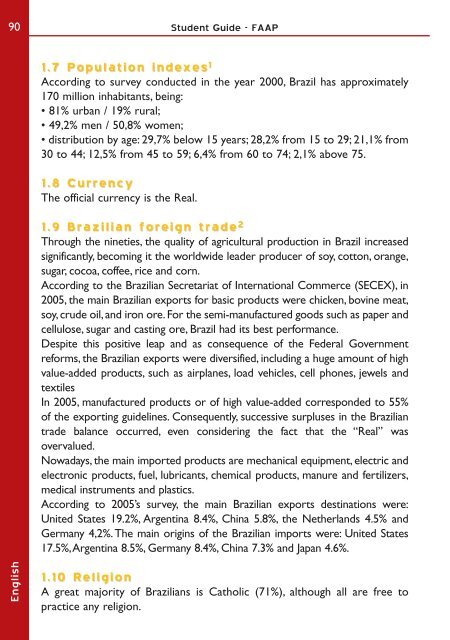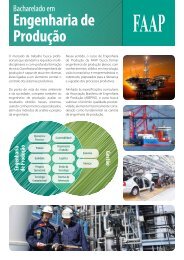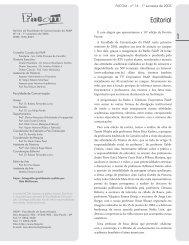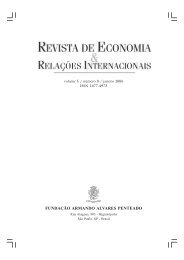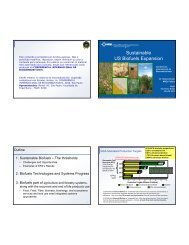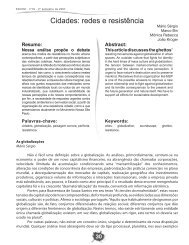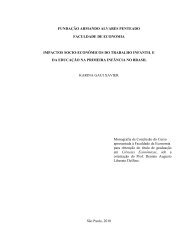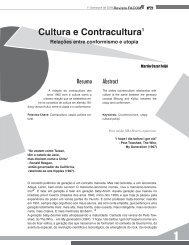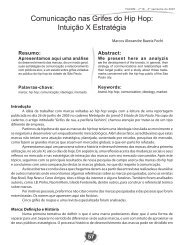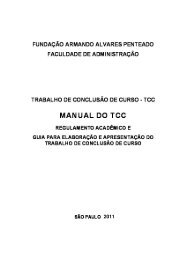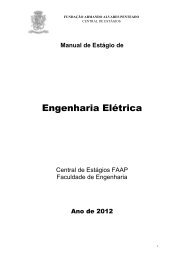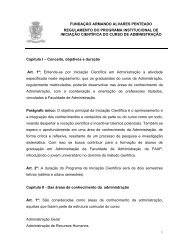Print guia aluno 06 - Faap
Print guia aluno 06 - Faap
Print guia aluno 06 - Faap
Create successful ePaper yourself
Turn your PDF publications into a flip-book with our unique Google optimized e-Paper software.
90 Student Guide - FAAP<br />
English<br />
1.7 Population indexes 1<br />
According to survey conducted in the year 2000, Brazil has approximately<br />
170 million inhabitants, being:<br />
• 81% urban / 19% rural;<br />
• 49,2% men / 50,8% women;<br />
• distribution by age: 29,7% below 15 years; 28,2% from 15 to 29; 21,1% from<br />
30 to 44; 12,5% from 45 to 59; 6,4% from 60 to 74; 2,1% above 75.<br />
1.8 Currency<br />
The official currency is the Real.<br />
1.9 Brazilian foreign trade 2<br />
Through the nineties, the quality of agricultural production in Brazil increased<br />
significantly, becoming it the worldwide leader producer of soy, cotton, orange,<br />
sugar, cocoa, coffee, rice and corn.<br />
According to the Brazilian Secretariat of International Commerce (SECEX), in<br />
2005, the main Brazilian exports for basic products were chicken, bovine meat,<br />
soy, crude oil, and iron ore. For the semi-manufactured goods such as paper and<br />
cellulose, sugar and casting ore, Brazil had its best performance.<br />
Despite this positive leap and as consequence of the Federal Government<br />
reforms, the Brazilian exports were diversified, including a huge amount of high<br />
value-added products, such as airplanes, load vehicles, cell phones, jewels and<br />
textiles<br />
In 2005, manufactured products or of high value-added corresponded to 55%<br />
of the exporting guidelines. Consequently, successive surpluses in the Brazilian<br />
trade balance occurred, even considering the fact that the “Real” was<br />
overvalued.<br />
Nowadays, the main imported products are mechanical equipment, electric and<br />
electronic products, fuel, lubricants, chemical products, manure and fertilizers,<br />
medical instruments and plastics.<br />
According to 2005’s survey, the main Brazilian exports destinations were:<br />
United States 19.2%, Argentina 8.4%, China 5.8%, the Netherlands 4.5% and<br />
Germany 4,2%. The main origins of the Brazilian imports were: United States<br />
17.5%,Argentina 8.5%, Germany 8.4%, China 7.3% and Japan 4.6%.<br />
1.10 Religion<br />
1.10 Religion<br />
A great majority of Brazilians is Catholic (71%), although all are free to<br />
practice any religion.


